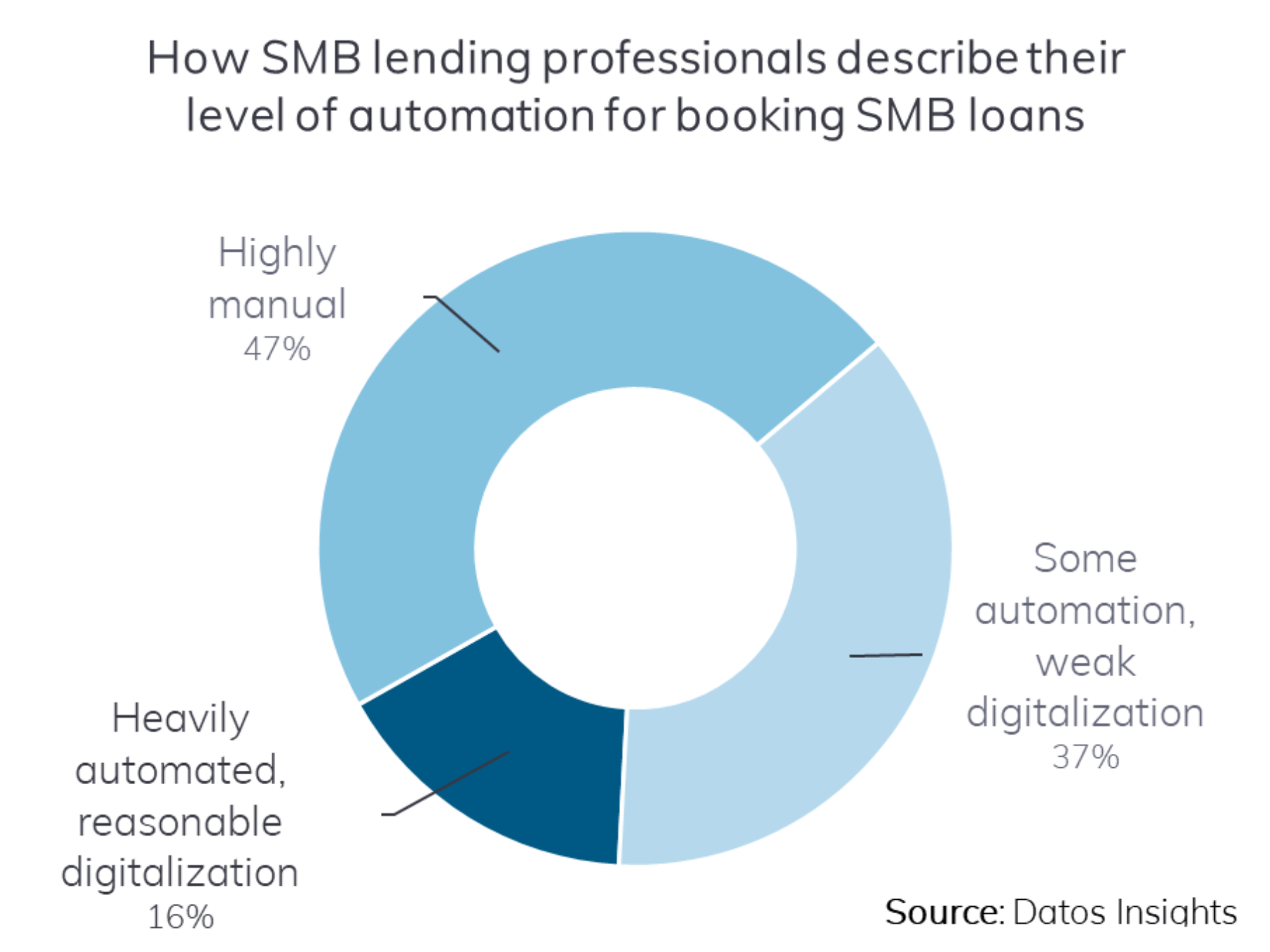1. Stop the loan-request runaround. Use a digital loan request.
Stop: Driving to pick up bank statements and other supporting documents from a borrower or making repeated phone calls to secure them, and tracking documents needed for loan processing on a spreadsheet one by one as they trickle in.
Instead: When borrowers use a digital loan request (available to them 24/7, from home, office, or even in the branch with FI assistance), current-customer information is automatically pulled into the form. The responsive loan application shows borrowers only those fields they need to complete, and the data flows through to later processes. The digital loan application lists the documents they must provide (which they can do through a secure portal) before the request can move forward to credit decisioning. The process is more convenient and more straightforward for loan applicants, so the request is ready for review more quickly.
2. Stop hunting and gathering non-financial info. Review everything from one system.
Stop: Visiting multiple websites to record credit scores, conduct an OFAC check, perform ID verification, and satisfy other nonfinancial qualifications required for good loan decisions.
Instead: Review the loan request, which has credit scores and other nonfinancial qualification information pulled in via data partners, without leaving the loan origination system (LOS).
3. Stop manually building term sheets. Click a button that imports yours.
Stop: Creating a term sheet in Word or Excel, using the application to re-key all loan and customer or member information and referring to the institution’s credit policy document, then checking everything for accuracy.
Instead: Click a button to run term sheets and other reports, such as a proposal, executive summary, commitment letter, etc. Customer information is captured accurately with a single point of data entry with the loan request, so you can build out templates based on the bank or credit union’s credit policy and automatically generate reports you and others need throughout the credit decisioning process.
4. Stop manual tax-data entry. Easily upload and import the data.
Stop: Entering tax return data into a spreadsheet, then checking the spreadsheet for accuracy to begin the underwriting process.
Instead: Skip this step entirely. Dig into analysis faster when the loan origination system’s tax return scanning software uploads any file type of borrower’s tax documents and spreads them accurately and consistently. The time savings for credit analysts speeds up the decision for borrowers, creating a better chance to win deals. Lenders, meanwhile, have higher confidence in the underwriting process.
5. Stop spreading loans by hand. Start analyzing the loan request.
Stop: Manually spreading financials, tracking source documents and spreadsheet versions while ensuring to incorporate all changes.
Instead: Click a button and quickly spread and analyze loans using automatically calculated metrics selected by the institution. Credit spreads can be two to three hours faster per loan when credit risk software auto-imports financial data from the individual’s bank accounts and automatically creates a personal financial statement. The analyst can focus on analyzing large, complex scenarios rather than data entry and spreadsheets.
6. Stop laboring through risk ratings. Generate fully documented ones with one click.
Stop: Determining a risk rating based on the analyst’s review of financials and their individual interpretation of the institution’s risk rating scale, then tracking changes in a spreadsheet each time updated financial information is received.
Instead: Click a button, and the platform’s credit rating software will generate a risk rating with complete documentation based on the institution’s standardized rating system using the borrower information and customized factors and weightings. Examine risk rating changes across the portfolio on one screen and automatically update risk ratings when the borrower provides updated financials with increased objectivity, accuracy, and speed.
7. Stop manually drafting credit memos. Import info automatically.
Stop: Spending hours writing up the credit memo. Even if previous memos are re-used as templates, credit analysts must first compile all customer and financial information, the loan data, metrics, pricing, risk rating calculations, and collateral photos. Then, they must attach spreadsheets of the financials and review all information for accuracy (especially if cutting and pasting text from previous memos).
Instead: Click a button to auto-populate required information into an institution-customized credit memo template for a fully documented credit memo.
8. Stop cutting and pasting loan docs. Jump to reviewing them.
Stop: Manually preparing loan documents by copying and pasting agreed-upon terms and conditions, entering all ratios, disclosures, and the loan structure verbiage into the proper data fields.
Instead: Click a button for all information to be electronically pushed into legal loan documents that are populated with necessary disclosures and formats and are ready for signatures.
9. Stop due diligence doc distress. Get notified when they’re received.
Stop: Wrangling due diligence documents.
Instead: Send an automated email to notify borrowers of documents needed for closing and provide a link to upload them securely into a portal. When notifications alert the lending team of documents received and collected in a central relationship document library, tracking is easier, too.
10. Stop chasing down borrower signatures. Close the loan and move on to the next.
Stop: Mailing or faxing loan docs to multiple people and businesses for signature and wondering who has signed what.
Instead: Capture borrower signatures digitally, saving time and money so that you can track and close the loan faster.







